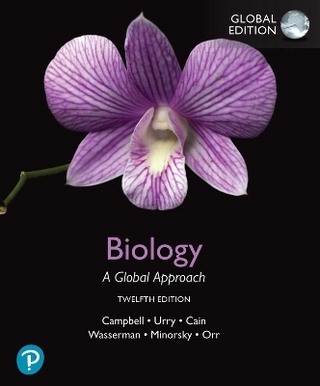
Handbook of Alcoholic Beverages – Technical, Analytical and Nutritional Aspects
Wiley-Blackwell (Hersteller)
978-0-470-97652-4 (ISBN)
- Keine Verlagsinformationen verfügbar
- Artikel merken
Alan J Buglass graduated with BSc from the Chemistry Department of the University of Nottingham in 1968 and then with PhD from the Chemistry Department of the University of Essex in 1972. After a number of junior teaching and post-doctoral appointments, including one at Imperial College with Dr. B.C. Challis, he took up a teaching post at the present Anglia Ruskin University (ARU) from 1974 to 2002, where he was subsequently promoted to a senior post. At ARU, he was course leader for some chemistry courses, such as part-time Graduateship of the Royal Society of Chemistry, designed primarily for personnel in local chemical industries. Since 2002, he has been a professor at Korea Advanced Institute of Science and Technology (KAIST). His present research interests are in mechanistic organosulfur chemistry and analytical organic chemistry, particularly the analysis of wine (and similar) components, both volatile and non-volatile. He is a Fellow of the Royal Society of Chemistry (since 1995). He has published extensively including papers on analysis of wine, organic compound content of grapes in English vineyards, etc.
List of Contributors. General Acknowledgments and Thanks. VOLUME 1. 1 INTRODUCTION, BACKGROUND AND HISTORY (John A. Hudson and Alan J. Buglass). 1.1 Alcoholic Beverages of theWorld: An Introduction to the Contents of This Book. 1.2 History and Development of Alcoholic Beverages. 1.2.1 The Beginnings (From the earliest Times to ca. 1100 AD). 1.2.2 Medieval Times and Beyond (ca. 1100-1750). 1.2.3 The Industrial Revolution and the Influences of Science and Technology (ca. 1750-1900). 1.2.4 Modern Times and Newer Processes (ca. 1900-Present Day). 1.2.5 The Development of Analytical Methods. References. 1.3 Some Recent Trends and Developments. 1.3.1 Overview. 1.3.2 Big is Beautiful: Multinational Companies and the Globalization of Alcoholic Beverages. 1.3.3 Small is Beautiful: The Growth in Microbreweries and Craft Breweries and the localization of Products. 1.3.4 Revival of Traditional Beer Styles. 1.3.5 Changes in Beer Drinking Habits. 1.3.6 Global Growth in Wine Drinking. 1.3.7 Development of New Wine Industries. 1.3.8 Revival of Cider and Perry: the Magic of Ice. 1.3.9 The Rise of Flavored Alcoholic Beverages ('Alcopops'). 1.3.10 Calorie-Counting and Health Perception of Alcoholic Drinks. 1.3.11 Binge Drinking. 1.3.12 Organic and Biodynamic Production of Alcoholic Beverages. 1.3.13 Use of Genetically Modified (GM) Crops and Microorganisms. References. 2 FERMENTED BEVERAGES: BEERS, CIDERS, WINES AND RELATED DRINKS (Marianne McKay, Alan J. Buglass and Chang Gook Lee). 2.1 Introduction: Overview of Fermentation and Microorganisms. 2.1.1 Yeasts. 2.1.2 Lactic Acid Bacteria. 2.1.3 Molds and Spoilage Organisms. References. 2.2 Alcoholic Fermentation. 2.2.1 Introduction. 2.2.2 Physiology and Morphology of Yeast. 2.2.3 Nutritional Requirements of Yeast. 2.2.4 The Use of Naturally Occurring ('Wild') Yeasts in Fermentations. 2.2.5 The Killer Factor. 2.2.6 The Use of Selected (Cultured) Yeast Strains. 2.2.7 Fermentation Vessels. 2.2.8 The Growth of a Yeast Population. 2.2.9 An Overview of Alcoholic Fermentation. 2.2.10 Flocculation. 2.2.11 Aroma Compounds and Fermentation. References. 2.3 Malolactic Fermentation. 2.3.1 Introduction. 2.3.2 Malolactic Bacteria: Morphology and Physiology. 2.3.3 Identification of Malolactic Bacteria. 2.3.4 Factors Affecting the Growth of Malolactic Bacteria. 2.3.5 Interactions Between Bacteria and Other Organisms. 2.3.6 Spontaneous Malolactic Fermentation. 2.3.7 Inoculation with MLB Starter Culture. 2.3.8 The Growth of Bacterial Populations. 2.3.9 The Malolactic Fermentation Process. 2.3.10 Production of Diacetyl. 2.3.11 Microbial Stability. 2.3.12 Monitoring Malolactic Fermentation. 2.3.13 Finishing and/or Preventing Malolactic Fermentation. 2.3.14 Production of Biogenic Amines by Malolactic Bacteria. 2.3.15 Other Effects of MLF. 2.3.16 Malolactic Fermentation and Aroma. 2.3.17 Lactic Spoilage. References. 2.4 Acetic and Other Fermentations. 2.4.1 Introduction. 2.4.2 Acetic Acid Bacteria. 2.4.3 Lactic Acid Bacteria. 2.4.4 The Activities of Yeasts other than Saccharomyces. 2.4.5 Film Forming Yeasts. 2.4.6 Molds. 2.4.7 Prevention of Spoilage. References. 2.5 Preservatives Used in the Production of Alcoholic Beverages. 2.5.1 Introduction. 2.5.2 Sulfur Dioxide (SO2). 2.5.3 The Roles of SO2. 2.5.4 Sorbic Acid. 2.5.5 DMDC (Velcorin). 2.5.6 Ascorbic Acid (Vitamin C). 2.5.7 Pimaricin (Natamycin). 2.5.8 Other Preservatives. References. 2.6 Beer. 2.6.1 The Basic Brewing Processes. 2.6.2 Malting and Mashing. 2.6.3 Boiling the Wort. 2.6.4 Fermentation. 2.6.5 Top Fermentation. 2.6.6 Bottom Fermentation. 2.6.7 Other Fermentations. 2.6.8 Modern Methods of Fermentation. 2.6.9 Beer Treatment: Fining, Filtration and Pasteurization. 2.6.10 Packaging of Beer: Casking, Kegging, Bottling and Canning. 2.6.11 Dispensing of Draught Beers. 2.6.12 Oxidation and the Staling of Beer. 2.6.13 Beer styles. References. 2.7 Cereal-based and Other Fermented Drinks of Asia, Africa and Central/South America. 2.7.1 The Rice 'Wines' of Asia. 2.7.2 Native Fermented Drinks of Africa and South America. References. 2.8 Cider and Perry. 2.8.1 Introduction. 2.8.2 The Basic Ingredients. 2.8.3 Harvesting, Crushing and Pressing. 2.8.4 Fermentation and Maturation. 2.8.5 Traditional and Small-Scale Cider and Perry Production: Fermentation and Beyond. 2.8.6 Large-Scale (Factory) Production of Cider and Perry: Fermentation and Beyond. 2.8.7 Newer Techniques, Recent Developments and Innovations. 2.8.8 Cider and Perry from Around the World. References. 2.9 Wine. 2.9.1 White Winemaking. 2.9.2 Red Wine Production. 2.9.3 Sparkling Wines. 2.9.4 Fining, Filtration and Clarification. 2.9.5 Wine Maturation and Ageing. 2.9.6 Some Current Trends in Wine Production. References. 2.10 Fortified Wines and Liqueur Wines. 2.10.1 Overview and Scope. 2.10.2 Sherry and Other Flor Wines. 2.10.3 Flor and Oxidation in Sherry Wines. 2.10.4 Other Flor Wines. 2.10.5 Madeira. 2.10.6 Estufagem and Cask Maturation of Madeira Wine. 2.10.7 Port. 2.10.8 Marsala and M'alaga. 2.10.9 Vins Doux Naturels, Liqueur Muscat and Similar Wines. 2.10.10 Vins de Liqueurs and Similar Beverages. References. 2.11 Fruit Wines and Other Nongrape Wines. 2.11.1 Overview and Scope. 2.11.2 Comparison of Fruit for Winemaking. 2.11.3 Making Fruit Wines. 2.11.4 Country Wine Styles. 2.11.5 Mead. References. 2.12 Aromatized Wines. 2.12.1 Introduction and Brief History of Aromatization of Wine. 2.12.2 Vermouth. 2.12.3 Other Aromatized Wines and Aperitifs. References. 2.13 Low Alcohol and Non-Alcoholic Beers, Ciders and Wines. 2.13.1 Overview. 2.13.2 Production of Low Alcohol Beverages by Limited or Checked Alcohol Methods. 2.13.3 Dealcoholization Methods. References. 3 DISTILLED SPIRITS (Alan J. Buglass, Marianne McKay and Chang Gook Lee). 3.1 Introduction: Distillation Methods and Stills. 3.1.1 A Brief History and Theory of Distillation. 3.1.2 Batch Distillation. 3.1.3 Continuous Column Distillation. References. 3.2 Scotch Whisky. 3.2.1 Introduction and Brief History. 3.2.2 The Raw Materials. 3.2.3 Malting, Mashing, Cooking and Fermentation. 3.2.4 Distillation. 3.2.5 Maturation, Blending and Other Postdistillation Processes. 3.2.6 The Flavor and Styles of Scotch Malt Whiskies. References. 3.3 Whiskeys. 3.3.1 Scope. 3.3.2 Irish Whiskey. 3.3.3 The Whiskeys of America. 3.3.4 Bourbon and Tennessee Whiskey. 3.3.5 American Rye and Corn Whiskies. 3.3.6 Whiskies from Other Countries. References. 3.4 Other Cereal Based Spirits. 3.4.1 Introduction and Scope. 3.4.2 Gin and Similar Juniper Flavored Spirits. 3.4.3 Akvavit (Aquavit) and Vodka. 3.4.4 Asian Grain Spirits. References. 3.5 Cane Spirits, Vegetable Based Spirits and Aniseed Flavored Spirits. 3.5.1 Overview and Scope. 3.5.2 History and Basic Description of Rum and Cachaca. 3.5.3 Fermentation and Distillation Practices in the Production of Cachaca and Rum. 3.5.4 Flavor Characteristics of Rum and Cachaca. 3.5.5 Arrack, Mezcal and Tequila. 3.5.6 Aniseed Flavored Spirits. References. 3.6 Brandy. 3.6.1 Introduction and Brief History. 3.6.2 Cognac. 3.6.3 Armagnac. 3.6.4 Other Brandies. 3.6.5 Quality Control in Brandy Production. 3.6.6 Evaluating Brandy. References. 3.7 Grape and Other Pomace Spirits. 3.7.1 Introduction. 3.7.2 Production of Pomace Spirits. 3.7.3 Types of Pomace Spirits and Sensory Characteristics. References. 3.8 Fruit Spirits. 3.8.1 Introduction. 3.8.2 Apple and Pear Spirits. 3.8.3 Fruit Spirits of Central Europe. 3.8.4 Plum Spirits of Eastern Europe. 3.8.5 Other Fruit Spirits. References. 3.9 Liqueurs and Their Flavorings. 3.9.1 Introduction and Scope. 3.9.2 Fruit and Fruit Flavored Liqueurs. 3.9.3 Flower, Herb, Spice and Bitter Liqueurs. 3.9.4 Cocoa, Coffee and Tea Liqueurs. 3.9.5 Nut and Emulsion Liqueurs. 3.9.6 Production and Use of Essences and Concentrates. References. VOLUME 2. 4 ANALYTICAL METHODS (Alan J. Buglass and Darren J. Caven-Quantrill). 4.1 Introduction. 4.1.1 Why Analyze Alcoholic Beverages? An Overview of the Need for Analysis. 4.1.2 Process Monitoring. 4.1.3 Identification of Origin, Determination of Authenticity and Detection of Fraud. 4.1.4 Determination and Characterization of Beverage Components and Processes. 4.1.5 Development of New Analytical Methods. References. 4.2 Extraction and Focusing Methods in Sample Preparation. 4.2.1 Overview. 4.2.2 Liquid Extraction Techniques. 4.2.3 Distillation Methods. 4.2.4 Solid Phase Extraction and Related Methods (Sorption Techniques). 4.2.5 Headspace Methods. 4.2.6 Combinations of Methods (With Particular Application to Enological Products). 4.2.7 Summary. References. 4.3 Chromatographic Methods. 4.3.1 Thin Layer Chromatography and Related Methods. 4.3.2 Capillary Gas Chromatography. 4.3.3 Liquid Chromatography. 4.3.4 Counter Current Chromatographic Methods. References. 4.4 Spectroscopic Methods. 4.4.1 Nuclear Magnetic Resonance . 4.4.2 Infrared Spectroscopy. 4.4.3 Colorimetry, UV-Visible Spectroscopy and Fluorometry. 4.4.4 Atomic Absorption and Emission Spectroscopy. 4.4.5 Mass Spectrometry. References. 4.5 Electrochemical Methods. 4.5.1 Potentiometric Methods. 4.5.2 Voltammetric Methods. 4.5.3 Electrochemical Sensors. References. 4.6 Other Methods. 4.6.1 Electrophoretic Techniques. 4.6.2 Flow Injection Techniques. 4.6.3 Chemical and Physical Methods. References. 4.7 Sensory Analysis. 4.7.1 Introduction. 4.7.2 Olfaction and Taste. 4.7.3 Odor Theshold, Odor Activity and Low Impact Odorants. 4.7.4 Sensory Tests. References. 5 NUTRITIONAL AND HEALTH ASPECTS (Nigel J. Fuller, Suk Hean Lee and Alan J. Buglass). 5.1 General Introduction. 5.1.1 'Alcohol' in Perspective. 5.1.2 The Extent and General Implications of Alcoholic Beverage Consumption. 5.1.3 Ingredients, Processing and the Nutrient Content of Alcoholic Beverages. 5.1.4 Nutritional Considerations. 5.1.5 Summary. References. 5.2 Factors Influencing the Nutrient Content of Alcoholic Beverages. 5.2.1 Wines. 5.2.2 Beers. 5.2.3 Cider and Perry. 5.2.4 Distilled Beverages. 5.2.5 Fortified wines. 5.2.6 Alcopops. 5.2.7 Cocktails. References. 5.3 Macronutrient Content of Alcoholic Beverages. 5.3.1 Water. 5.3.2 Alcohol. 5.3.3 Carbohydrates (Including Fiber). 5.3.4 Nitrogenous Compounds: Proteins, Peptides, Amino Acids, Amines and Nucleotides. 5.3.5 Lipids. References. 5.4 Micronutrient Content of Alcoholic Beverages. 5.4.1 Vitamins. 5.4.2 Electrolytes and Functional Elements (Minerals and Trace Elements). 5.4.3 Phytochemicals. References. 5.5 Alcohol Ingestion, Absorption and Catabolism: Metabolic and Nutritional Consequences. 5.5.1 Alcohol Catabolism. 5.5.2 Methanol Catabolism. 5.5.3 Effects of Alcohol on Intake of Foods and Energy. 5.5.4 Consequences for Intermediary Metabolism of Alcohol Catabolism. 5.5.5 Effects of Alcohol and its Metabolites on Absorption, Metabolism and Utilization of Key Nutrients. References. 5.6 Health Consequences of Alcohol Intake. 5.6.1 Overview: Alcoholic Beverages and Society. 5.6.2 Harmful Effects of Excessive Alcohol Intake. 5.6.3 Possible Benefits of Low to Moderate Consumption of Alcoholic Beverages. 5.6.4 Conclusion. References. 5.7 Carbohydrates in Alcoholic Beverages and Health. 5.7.1 Metabolizable Carbohydrate. 5.7.2 Low Carbohydrate Beers. 5.7.3 High Carbohydrate Beers. 5.7.4 Nonmetabolizable Carbohydrate. References. 5.8 Antioxidant Value of Alcoholic Beverages. 5.8.1 Overview. 5.8.2 Summary of Aerobic Cell Metabolic Processes. 5.8.3 Short Review of Oxygen in Cell Metabolic Processes. 5.8.4 Incomplete Reduction of Oxygen, the Formation of Reactive Oxygen Species and Cell Damage. 5.8.5 Natural Antioxidants in Food. 5.8.6 Phenolic Substances in Alcoholic Beverages. 5.8.7 Some Chemical Characteristics of Phenolic Compounds. 5.8.8 Health Benefits and Antioxidant Potency of Alcoholic Beverages, their Phenolic Extracts and their Individual Phenolic Components. 5.8.9 Mechanisms of In Vivo Health Benefits of Dietary Phenols: Antioxidants or Otherwise? References. 5.9 Additives in Alcoholic Beverages. 5.9.1 Introduction. 5.9.2 Sulfur Dioxide and Other Preservatives. 5.9.3 Fining Agents and Adjuncts. 5.9.4 Other Additives. 5.9.5 Regulations and Legislation Relating to Additives. References. 5.10 Residues in Alcoholic Beverages. 5.10.1 Introduction. 5.10.2 Pesticides. 5.10.3 Metal and Nonmetal Residues. 5.10.4 Industrial Contaminants. References. 5.11 Other Trace Substances in Alcoholic Beverages. 5.11.1 Introduction. 5.11.2 Phytochemicals. 5.11.3 Nitrogenous Allergenic Substances. 5.11.4 Mycotoxins. 5.11.5 Other Trace Substances. References. Appendix 1 Units of Measurement and Interconversions. Appendix 2. Appendix 3 Pressure and Temperature Unit Conversions, and Numerical Values of Constants. Glossary. Index.
| Erscheint lt. Verlag | 17.12.2010 |
|---|---|
| Verlagsort | Hoboken |
| Sprache | englisch |
| Maße | 189 x 246 mm |
| Gewicht | 666 g |
| Themenwelt | Naturwissenschaften ► Biologie |
| Naturwissenschaften ► Chemie | |
| Technik ► Lebensmitteltechnologie | |
| ISBN-10 | 0-470-97652-7 / 0470976527 |
| ISBN-13 | 978-0-470-97652-4 / 9780470976524 |
| Zustand | Neuware |
| Haben Sie eine Frage zum Produkt? |
aus dem Bereich

